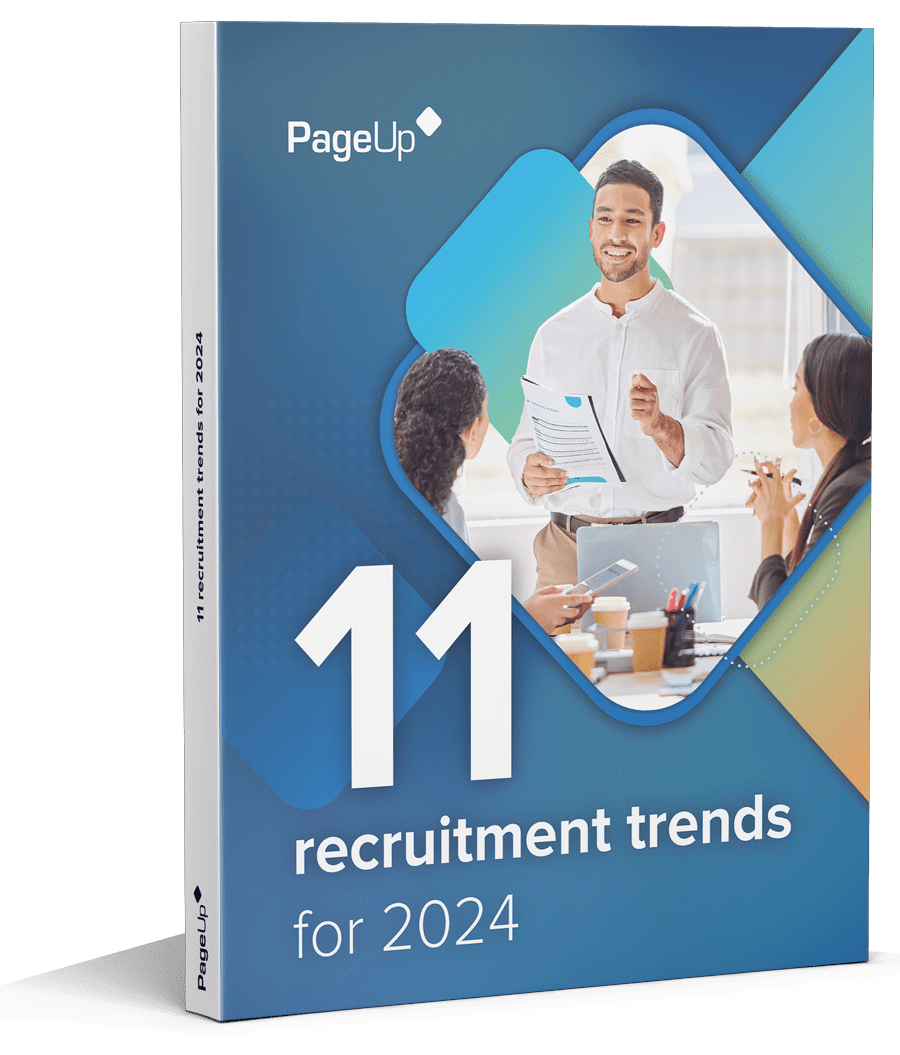Hiring the right people is key to business success. With the right HR tech, talent teams can create a seamless experience for candidates, hiring managers and their recruiters. But, for many teams, getting stakeholder buy-in for a new system —or even a change in provider—can be a challenge. With so many choices, vendors and focus areas to consider, it can be overwhelming to know where to start.
Whether you’re looking for a new career site, recruitment marketing tools, an ATS or to elevate your employee experience through onboarding and beyond: the bones of a business case are largely the same. You need to show value. How can you present a compelling business case to gain stakeholder buy-in and set your team up for success?
How to build a business case for HR tech:
Identify the business need
Start by clearly outlining the problem —and importantly, the impact this problem has on the larger business. Present a detailed overview of what your key challenges are, and why it matters to the organisationorganization. Perhaps your current recruitment process is too time-consuming and costing you candidates. Maybe onboarding, retention or future-proofing your workforce is your key concern. If your stakeholders understand the real-world impact of these challenges, it’s easier to make a case for change.
Consider:
- As a hiring team, what are your goals?
- How do these impact the larger organisationalorganizational strategy?
- What’s the risk these challenges pose to the organisationorganization?
Understand who you’re talking to and what matters to them.
It’s important to think about who you’re talking to when navigating stakeholder buy-in. For example, a CFO and COO may have two very different perspectives on the same issue. When creating a business case for HR software, write a list of your decision-makers, influencers and who you need to consult. Consider what the solution means from their perspective. What are their priorities? What do they know about talent management solutions? How will a better hiring process benefit their function? Put yourself in their shoes and speak their language when delivering your business case. Including multiple perspectives helps to position the solution as a win for the whole organisationorganization — not just for HR.
Consider:
- Who needs to be involved in this decision?
- What are their key objectives?
- How will an improved hiring process (onboarding, succession, recruitment –any!) impact them and their objectives?
Get to know your metrics and define your target KPIs
Now that you’ve outlined your problem, and know who’s involved, it’s time to dive into the data. Choose some key KPIs connected to your objectives. If you’re looking for a talent management solution, some to consider are:
- Time-to-hire or cost-per-hire
- DEI representation
- Sourcing channel effectiveness
- Employee retention rates
- Time to productivity and time to compliance
- Candidate-to-hire ratio or offer acceptance rate
Depending on your goal, your KPIs will differ. But, it’s important to align your goals with a metric, so that you’re able to make ROI projections and outline with data how talent software will solve your problem and positively impact those results. Plus, you’ll need these benchmarks to show the impact down the track!
Consider:
- How will you evaluate success?
- Where are you sitting currently —what’s your benchmark?
- What improvement do you need to see to indicate ROI?

Prove the solution addresses the business need
In a business case, data and real-world examples provide much-needed credibility. The HR tech space is highly competitive —how can you show that your solution and your provider are the right choice?
Take the key KPIs you outlined above and aim to find a proof point to support as many as possible. Read case studies, testimonials and ask your shortlisted vendor for previous examples of ROI.
PageUp customers have seen a wide range of benefits, ranging from:
- 400% increase in referral hires and 50% decrease in agency spend
- $1 million savings on recruitment spend
- 4 hour time-to-hire
- 40% reduction in onboarding costs and onboarding time slashed from 15 days to 3
- Enhanced candidate experience
- Better data-driven decision making
- And more —we have a range of case studies outlining the numerous benefits.
There are also handy tools available to help you gain a better understanding of how the solution could fit into your budget. The more specific your examples and proof points, the better.
Consider:
- What are the main benefits HR tech would give you?
- What is the quantifiable/monetary benefit of these outcomes?
- What case studies are available to add credibility to your proposal?
Understand your budget and know your costs
Do you know where your current budget is going? Thoroughly review each line item and conduct a cost-benefit analysis. Are you spending a lot on job boards, agencies or other areas that could be reduced with the right tech? Are you needing additional headcount to manage all the admin that could be resolved with a streamlined process? Are you losing new employees due to poor onboarding? Drill down into all your costs: and consider the costs involved in not updating your solution too.
Consider:
- Are there any areas you can reduce waste, or anywhere you can cut back?
- What’s the monetary impact of things like churn or losing new hires?
- How will the savings from reducing waste and improving your processes offset the investment in the software?
Find the right partner
Good vendors will partner with you to build your business case — At PageUp, we have access to benchmarking data, case studies, proven examples of ROI and can help you communicate how our solutions will provide value to your organisationorganization.
We can also help fill in some of the unknowns that often set projects back: like timelines and scope for implementation. When can you expect to commence, launch and most importantly: see real results.
It’s important to know what you’re looking for in a vendor, and start thinking about this early. Beyond implementation, consider their customer support model —which can have a huge impact on the success of a chosen solution. At PageUp, we’re proud of our all-inclusive support model: we work with you to ensure you get the most out of the software.
Consider:
- Can the vendor help to build your business case?
- What’s your vendor’s implementation process?
- What’s your vendor’s approach to on-going support?
Final thoughts
Taking on a new HR software solution is a big decision. But, with recruitment teams stretched thin, it’s no longer a nice-to-have. Whether you’re looking to attract higher quality applicants, build robust talent pipelines, streamline your onboarding, boost candidate experience or set your current employees up for success, HR tech can make the hard work feel easy.
By partnering with the right vendor, building the business case for HR software can be straightforward: ultimately, the solutions pay for themselves. And at PageUp, we’re with you every step of the way —from business case through to guaranteed on-time implementation, backed by 24/7 customer service.
Want to get started? Get in touch today to see PageUp’s end-to-end talent management solutions in action
Fresh insights for HR
Stay up to date with HR trends, tips and more when you sign up for our industry newsletter







